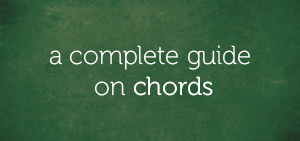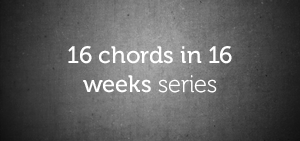Playing by ear is just like reading and writing. You do it from left to right.
Sure, some techniques call for learning the melody first. This may be the case in melody-intensive songs like hymns and folk music.
But if you’re trying to learn the real chords and progressions at work in a song, you can’t go wrong honing in on the bass first.
Melody = high = right.
The bass is establishing the pattern. It’s giving you the roadmap of the song.
And since songs follow repeatable, reusable patterns, you’ll find yourself recognizing similar patterns in other songs as you do this more.
The good news is: It’s not hard to get good at following the bass.
Consider the odds of other things:
- High school athlete being drafted into the NBA after college: 1 in 6,864,000
- Winning the Powerball Lottery: 1 in 175,223,510
- Becoming a movie star: 1 in 1,505,000
- Becoming U.S. President: 1 in 10,000,000
Guess what the odds of picking the next correct bass note are?
1 in 12!
No matter what you do, there are only 12 notes on the piano.
If you hear a C, there are only 12 notes, including itself, it can move to.
Viewed in this light, this should be very assuring.
Sure, it will take time conditioning your ear to hear distance (aka – “intervals“). That’s what ear training is for.
But once you get good, this will be the key to eventually picking up any song you want.
Playing By Ear – Start with the major scale
It’s not a bad idea to also learn how to find the key of a song as to avoid aimlessly picking at bass notes randomly.
I rephrase:
LEARN TO FIND THE KEY OF A SONG — this is the first step to playing by ear.
For example, if you’ve used my techniques to learn how to find the key of any song, you’ve now found out what planet you’re on.
This will limit most of your bass notes from 12 options to a mere 7!
Why?
Because major scales have 7 unique notes.
For example, C major:
If you’ve determined the song to be in C major, most of the bass notes you’ll be picking out will be derived from this scale.
Sure, C major will incorporate black keys as passing tones but these will likely not be the MAIN tones where chords rest. You should focus first on the tones of the scale and you’ll save yourself a lot of time and energy.
Also focus on the roles of each tone in a scale. Not all tones are created equal.
If you number the C major scale,
Three of these tones carry most of the weight of the key. We call them “Primary Chords.”
They are the 1st, 4th, and 5th tones of the scale.
In C major, we’re talking about C, F, and G.
Most songs in C major will incorporate these tones (and their chords) more than any other tones. And most of the other tones are used to support these primary tones. That’s why we call them “Secondary Chords.”
In C major, that’s the rest of the keys – D, E, A, and B.
I don’t want to get too deep, but these are connected to the primary chords in very interesting ways.
For example, consider the C major chord:
Add an “A” in your bass and now that same chord becomes an A minor 7:
Yup, C major and A minor go together. These keys are what we call “Relative Majors and Minors.” A is the relative minor of C major and C major is the relative major of A minor.
C –> A
Guess what?
The other primary chords have relative minors in the key as well.
F –> D
You can take an F major chord:
…add a D to it and it becomes a D minor 7 just like that.
Say it out loud… “because they’re related.”
F major is the relative major of D minor. D minor is the relative minor of F major.
G and E work the same way:
So when you’re listening to the bass, that’s why sometimes you’ll hear a bass pattern go from C to F to G but other times, you might here it go from C to D to G.
(We call the chord progression above a “1-4-5” because if you’ve numbered the C major scale and follow the bass notes above, they go from the 1st tone of the scale to the 4th tone of the scale to the 5th tone of the scale. All progressions can be labeled with numbers like this).
What happened?
It’s very possible that the melody and even the right-hand chords didn’t change (just like my example above) but the songwriter decided to go to a D minor 7 instead of the F major chord. Now you know why.
Although the D minor 7 sounds slightly different, it works in a very similar way to the F major chord in the original progression. After all, 3 of the 4 notes stayed the same. Same F major chord (F+A+C), check. Same melody (highest note, C), check. Just a different bass note.
Or you might hear the bass go from C to F to E instead of C to F to G.
Same concept. We just swapped out the G major for the E minor 7 chord.
Or you might hear two swaps: C to D to E.
The D minor 7 is in place of the F major.
The E minor 7 is in place of the G major.
Right hand stayed the same. Left hand changed.
This is what makes playing by ear fun and interesting. You can keep the spirit of the song but change things up to inject variety and creativity.
So remember:
Listen to what the bass is doing.
Find the key so you can limit the number of notes you have to choose from.
Know the primary chords of the key you’re in and how they interact with the secondary chords.
Open up your ears, knowing that your chances of figuring out the very next bass note are just 1 in 12.
And take a deep breath. You got this!
Until next time.







Comments on this entry are closed.